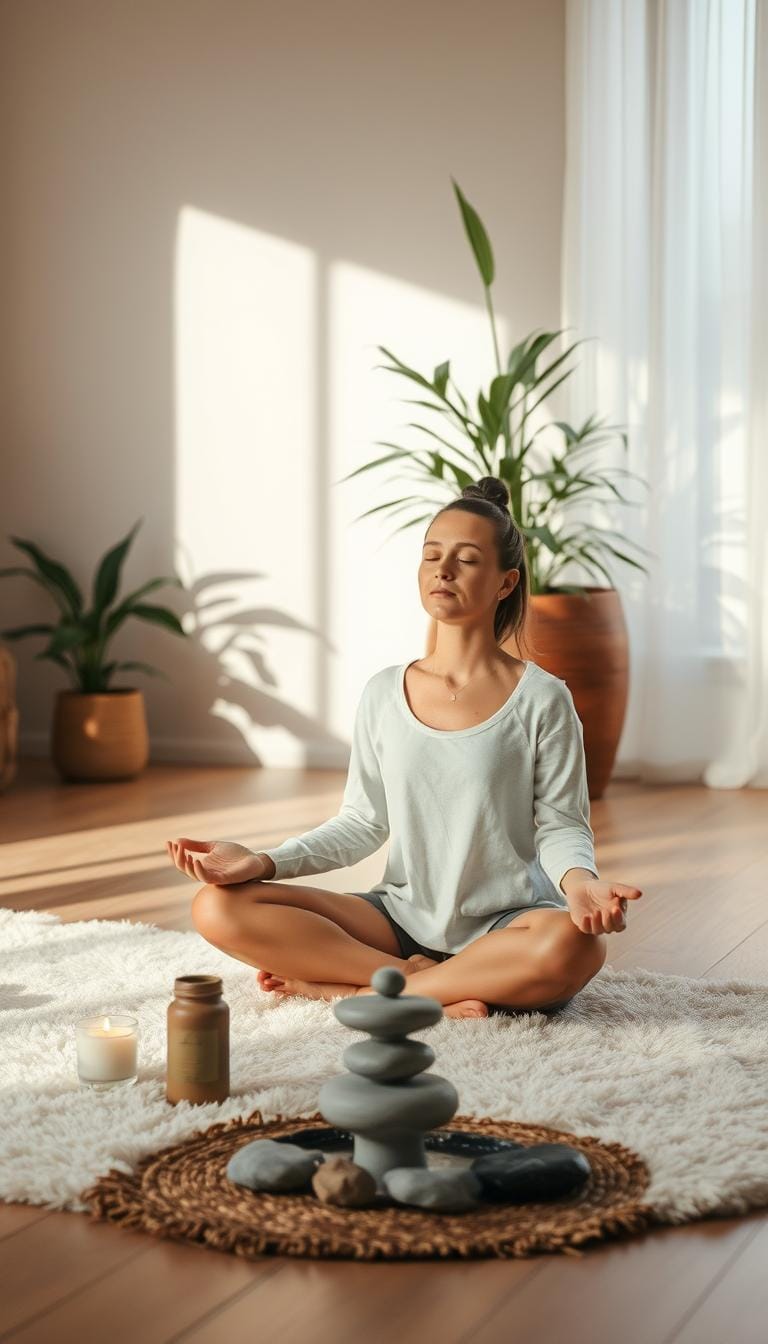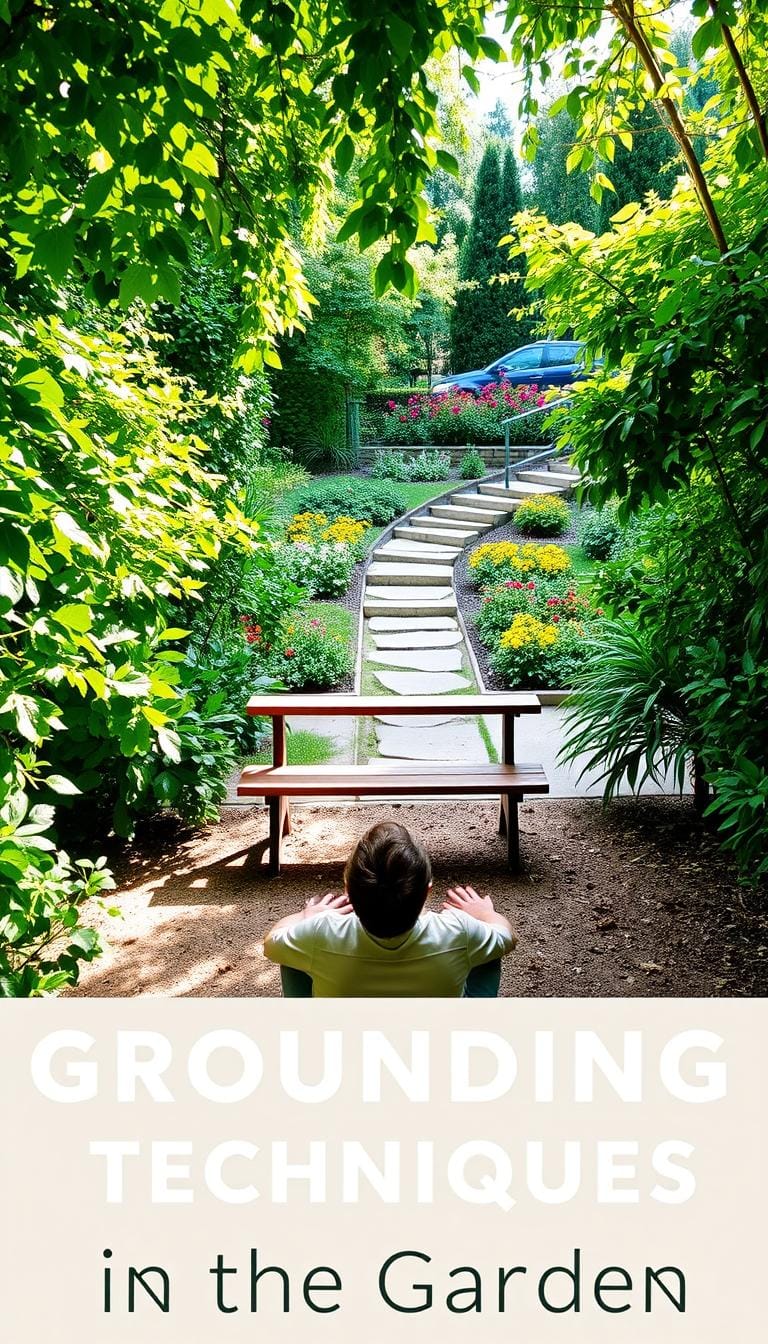Emotional Regulation Activities: How to Calm Anxiety in 3 Ways
Table of Contents
I’ve dealt with anxiety and know how vital it is to find ways to calm down. Emotional regulation is key to keeping our minds and bodies in balance. There are many strategies that can help.

In this article, we’ll look at three ways to ease anxiety. These methods will give you tools to handle overwhelming feelings. By adding these emotional regulation activities to your day, you can grow stronger and feel better mentally.
The three methods I’ll share have worked for me, and I’m eager to share them with you. By the end of this article, you’ll know how to calm anxiety and regulate your emotions in a healthy way.
Understanding Anxiety and Its Impact on Emotional Health
Anxiety affects not just our minds but also our bodies. It creates a complex web of emotional and physical responses. When we feel anxious, our brain starts a series of reactions to help us face threats.
This process involves many brain areas and chemicals, affecting our mood and health.
What Happens in Your Brain During Anxiety
The amygdala, a small almond-shaped part of the brain, is key in detecting threats during anxiety. It releases stress hormones like cortisol and adrenaline. This gets our body ready for the “fight or flight” response.
This can cause symptoms like a fast heart rate, sweating, and shaking.
The prefrontal cortex, which handles rational thinking and decision-making, can be affected by anxiety. This makes it harder to control our emotions and thoughts. Knowing this can help us find ways to calm our anxious minds.
The Connection Between Emotions and Physical Responses
Anxiety can show up physically in many ways, like muscle tension, stomach problems, and heart issues. The connection between our mind and body is two-way: our emotions can affect our health, and our body can influence our feelings.
| Emotional State | Physical Response |
|---|---|
| Anxiety | Rapid heartbeat, sweating |
| Fear | Trembling, muscle tension |
| Stress | Gastrointestinal discomfort, headaches |
By understanding these connections, we can use coping skills exercises like deep breathing, muscle relaxation, or mindfulness meditation. These can help ease both emotional and physical discomfort.

The Importance of Emotional Regulation Activities
I believe emotional regulation activities are key for a healthy life. It’s not just about handling anxiety. It’s about feeling good and strong when life gets tough. By learning to manage our emotions, we can handle life’s ups and downs better. This leads to better mental health and a happier life.

The Impact of Unregulated Emotions on Daily Life
Uncontrolled emotions can really mess up our daily lives. They can hurt our relationships, work, and happiness. When we can’t handle our feelings, we might feel more stressed, our relationships suffer, and we’re less productive.
For example, if we’re too anxious, we might avoid people or feel alone. This makes things even worse for us.
Benefits of Developing Emotional Regulation Skills
Learning to control our emotions brings many benefits. It can make us mentally healthier, improve our relationships, and make us more resilient. By mastering emotional regulation, we can feel less stressed and anxious, be happier, and live better.
These skills are useful in many areas of life. They help us deal with challenges in a smart way.
“The goal is to turn data into information, and information into insight.” This quote shows how important it is to know our emotions and how they affect us.
Assessing Your Current Emotional Regulation Abilities
Understanding your emotional regulation skills is key to achieving emotional balance. It’s about managing your emotional responses to different situations. Knowing where you are now is essential.
Common Signs of Poor Emotional Regulation
Poor emotional regulation shows in many ways. You might feel heightened anxiety levels, irritability, or struggle to relax even when it’s safe. If you often feel overwhelmed, react impulsively, or swing between intense highs and lows, it’s a sign you need to work on it.
Self-Assessment Techniques
To check your emotional regulation, use several self-assessment methods. Mindfulness practices and relaxation exercises are great for this. Mindfulness helps you notice your thoughts, feelings, and body sensations without judgment. Relaxation exercises, like deep breathing or progressive muscle relaxation, calm your mind and body.
Keeping a daily journal of your emotions is a simple yet effective way to assess yourself. By writing down your feelings and reactions daily, you can spot patterns and stress or anxiety triggers. This boosts self-awareness and helps you manage your emotions better over time.
Another method is regular mindfulness practice. Spend a few minutes each day focusing on your breath, thoughts, or doing a body scan. These practices build awareness of the present moment, which is vital for emotional control.
The Science Behind Effective Emotional Regulation
Recent studies have uncovered the brain’s role in managing emotions. This knowledge is key for keeping our minds healthy. It shows us how to handle our feelings better.
Neurological Basis for Emotional Regulation
Emotional regulation is a complex brain process. It involves the amygdala, prefrontal cortex, and hippocampus. The amygdala spots threats and starts emotional reactions. The prefrontal cortex helps control these reactions.
Studies found that people with anxiety have brain connections that are off. This makes it hard for them to manage their emotions.
Research-Backed Approaches to Managing Anxiety
Research has found ways to tackle anxiety. Mindfulness-based interventions help by focusing on the present. They reduce anxiety symptoms.
Cognitive-behavioral therapy (CBT) is also effective. It teaches people to face and change negative thoughts that cause anxiety.
By learning about the brain’s role in emotions and using proven methods, we can improve. This boosts our ability to handle anxiety and enhances our emotional health.
First Approach: Mindfulness-Based Emotional Regulation Activities
Mindfulness practices help manage anxiety by focusing on the present. They help us deal with our emotions better. This way, anxiety has less impact on our daily lives.
Grounding Techniques for Immediate Anxiety Relief
Grounding techniques focus on the present moment to distract from anxious thoughts. The 5-4-3-2-1 exercise is one method. It involves noticing five things you see, four things you touch, three things you hear, two things you smell, and one thing you taste.
This exercise grounds your senses and reduces anxiety. Another technique is focusing on your breath or feeling your feet on the ground. These physical sensations help you stay present and reduce anxiety.
Mindful Breathing Exercises
Mindful breathing is a key mindfulness practice. It involves paying attention to your breath. This simple technique calms the mind and body.
To practice, sit comfortably, close your eyes, and focus on your breath. If your mind wanders, gently bring it back to your breath without judgment.
Box breathing is a variation. Breathe in for four counts, hold for four counts, breathe out for four counts, and hold again for four counts. This shapes your breath into a “box” and calms your nervous system.
Body Scan Meditation for Emotional Awareness
Body scan meditation focuses on different body parts, starting from the toes to the head. It notices any sensations or discomfort without judgment. This practice increases emotional awareness by connecting with the body’s physical responses.
Step-by-Step Guide to Body Scanning
- Find a comfortable lying or sitting position where you can relax without distraction.
- Close your eyes and take a few deep breaths to calm your mind and body.
- Begin by bringing your attention to your toes, noticing any sensations, tension, or feelings of relaxation.
- Gradually move your focus up through the body, paying attention to each part in turn, including the feet, ankles, calves, knees, thighs, hips, back, chest, shoulders, arms, hands, neck, and head.
- As you focus on each area, notice any sensations without judgment, allowing yourself to release any tension or discomfort.
Incorporating Body Scans into Your Daily Routine
To make body scan meditation a habit, start by practicing it at the same time each day. Begin with short sessions, even just a few minutes. Gradually increase the duration as you become more comfortable with the practice.
Adding mindfulness practices like grounding techniques, mindful breathing, and body scan meditation to your daily routine can greatly improve emotional regulation and anxiety management. As you continue, you’ll find these practices not only reduce anxiety but also enhance your overall well-being.
Second Approach: Physical Strategies for Emotional Regulation
Physical strategies are a powerful way to manage anxiety and emotions. Adding physical activities to your daily life can greatly improve stress and anxiety management.
Progressive Muscle Relaxation
Progressive Muscle Relaxation (PMR) involves tensing and relaxing muscles. It helps release tension and promotes relaxation. Start by sitting or lying down comfortably.
Tense your toes for a few seconds, then relax them and feel the calmness spread. Move up your body, tensing and relaxing each part, like your feet, calves, and head. This method reduces physical tension.
Movement-Based Activities for Anxiety Management
Yoga and dancing are great for anxiety. They offer a physical release and improve mood. Yoga combines poses, breathing, and meditation for stress relief. Dancing is a fun way to release endorphins, boosting your mood.
The Role of Exercise in Regulating Emotions
Exercise is key for emotional balance. It boosts endorphins, which are natural mood lifters. Regular exercise can lower anxiety and depression symptoms, improve sleep, and enhance emotional well-being.
Quick Physical Interventions for Anxiety Attacks
During an anxiety attack, quick physical actions can be very helpful. Techniques like deep breathing, a short walk, or jumping jacks can calm your body. These actions activate the parasympathetic nervous system, countering stress.
Creating a Sustainable Physical Regulation Routine
To make physical regulation a habit, find enjoyable activities that fit your schedule. Consistency is key. A daily brisk walk or short yoga practice in the morning can set a positive day tone. By adding physical strategies to your routine, you build resilience against anxiety and stress.
| Physical Activity | Benefits |
|---|---|
| Progressive Muscle Relaxation | Reduces physical tension, promotes relaxation |
| Yoga | Combines physical postures with breathing techniques and meditation for holistic stress management |
| Dancing | Provides a fun way to release endorphins, improving mood |
| Brisk Walking | Stimulates endorphin production, enhances mood and reduces anxiety |
Third Approach: Cognitive Tools for Emotional Regulation
The third way to calm anxiety is using cognitive tools. These tools help people manage their feelings by changing how they think and see things.
Thought Challenging and Reframing
Thought challenging and reframing is a key tool. It helps spot and question negative thoughts. By changing these thoughts to more positive ones, anxiety can lessen.
For example, if someone is worried about an event, they might think, “I’m going to fail.” But, by asking for evidence and changing the thought, they can feel better. Like, “I’ve prepared well, and I’ll do my best.”
Journaling for Emotional Processing
Journaling is also a great tool. Writing down thoughts and feelings helps process emotions. It can reveal what causes anxiety.
To journal well, set aside time each day. Write about your feelings and what caused them. Looking back can show patterns in your anxiety.
Creating Helpful Mantras and Self-Talk
Positive self-talk and mantras help too. By using positive affirmations, you can fight off negative thoughts that come with anxiety.
Identifying Cognitive Distortions
Cognitive distortions are thoughts that are not realistic. They can make anxiety worse. Recognizing these distortions is the first step to changing them.
Practical Cognitive Exercises for Daily Use
There are daily exercises to improve emotional control. These include:
- Mindful observation: Focus on the present moment, observing thoughts without judgment.
- Gratitude practice: Reflect on things you’re grateful for each day.
- Cognitive restructuring: Challenge negative thoughts and reframe them positively.
Here’s a simple table to help you get started with these exercises:
| Exercise | Description | Benefit |
|---|---|---|
| Mindful Observation | Focus on the present moment | Reduces rumination |
| Gratitude Practice | Reflect on daily gratitudes | Enhances positive thinking |
| Cognitive Restructuring | Challenge and reframe negative thoughts | Reduces anxiety |
By using these cognitive tools every day, people can better manage their anxiety. This leads to more effective emotional control.
Creating Your Personalized Emotional Regulation Toolkit
A customized emotional regulation toolkit lets you control your anxiety. It combines various techniques and strategies. This way, you can manage your emotions effectively.
Combining Techniques for Maximum Effectiveness
To make a strong toolkit, mix different emotional regulation activities. Try combining mindfulness with physical exercises or cognitive tools. For example, start with mindful breathing exercises to calm your mind. Then, do yoga to release tension.
- Try different techniques to see what works for you.
- Blend mindfulness with physical activities.
- Add cognitive tools like journaling or thought reframing.
Adapting Activities to Different Anxiety Triggers
It’s important to know what triggers your anxiety. This helps you tailor your toolkit. For instance, if public speaking scares you, practice relaxation techniques before speaking.
Building Consistent Practice into Your Schedule
Being consistent is key to using your toolkit well. Make these activities part of your daily routine. Start small and grow your practices as you get better.
- Start with short daily practices, like 5-minute mindfulness exercises.
- Slowly increase the time as you get more comfortable.
- Put these practices in your daily planner or calendar.
By following these steps and staying consistent, you’ll build a strong emotional regulation toolkit. It will help you deal with anxiety and improve your well-being.
Conclusion: Building Emotional Resilience Through Regular Practice
Developing emotional resilience is a journey that needs consistent effort. By adding mindfulness and other strategies to daily life, people can handle anxiety better. This improves their overall well-being.
Using these techniques regularly can greatly improve emotional health. I suggest readers keep trying out these methods. They should adjust them to fit their personal needs and what triggers their emotions. This way, they can create a strong plan for dealing with anxiety and building resilience.
Starting this journey with patience and persistence can bring big changes. As people stick to regular practice, they’ll see better emotional control. This leads to a more balanced and fulfilling life.
Disclaimer: This content is for informational purposes only and does not substitute professional medical or therapeutic advice. Always consult a qualified health provider for any mental health concerns.






